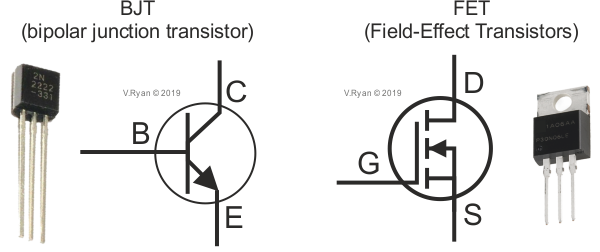How does a transistor work?

A transistor is a fundamental electronic device that is used to control the flow of electrical current. It is a three-terminal device consisting of a semiconductor material, typically silicon or germanium. The basic operation of a transistor relies on the interaction between two types of semiconductor material: N-type (negative-type) and P-type (positive-type).
There are two common types of transistors: the bipolar junction transistor (BJT) and the field-effect transistor (FET). I’ll provide a brief overview of both types:
- Bipolar Junction Transistor (BJT):
– The BJT has three layers of semiconductor material: the emitter (N-type), the base (P-type), and the collector (N-type). It can be either an NPN or a PNP transistor.
– When a voltage is applied to the base-emitter junction (for an NPN transistor) or reversed for a PNP transistor, it affects the flow of majority charge carriers (electrons or holes) in the base region.
– In an NPN transistor, when a small current flows from the base to the emitter, it allows a much larger current to flow from the collector to the emitter.
– The flow of current from the collector to the emitter can be controlled by the small current at the base, allowing the transistor to amplify and switch electrical signals. - Field-Effect Transistor (FET):
– The FET has three terminals: the source, the drain, and the gate. The semiconductor material has either an N-type or P-type channel.
– The key component in an FET is the gate, which is separated from the channel by an insulating layer (usually made of silicon dioxide).
– By applying a voltage to the gate, an electric field is created that controls the flow of charge carriers in the channel.
– In a metal-oxide-semiconductor FET (MOSFET), the gate voltage controls the conductivity of the channel, allowing the transistor to act as an amplifier or a switch.
In summary, both BJT and FET transistors operate based on the control of current or charge carriers in a semiconductor material. They can amplify weak signals, switch electrical currents on and off, and form the building blocks of modern electronic devices, such as computers, smartphones, and amplifiers.

